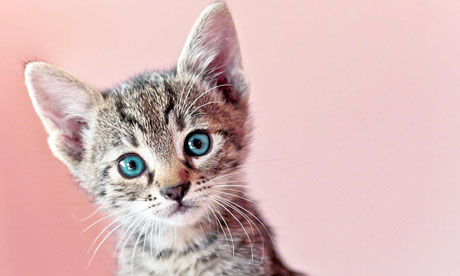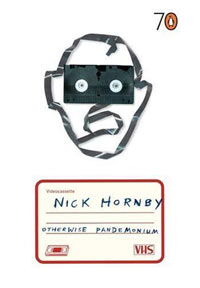Do you judge a book by its cover? Designers Jon Gray and Jamie Keenan shared their theories on attracting readers – from cute cats to alluring perfume – at the Edinburgh book festival

Would I look cute on a book cover? ... yes, according to the fluffy kitten theory. Photograph: Nevena Uzurov/Getty Images/Flickr RF
1. Face theory
Research suggests that human beings spend 48.6% of their lives decoding facial communication, so a big draw for a potential book buyer will be the familiarity of a face. The cover of Nick Hornby's Otherwise Pandemonium, for example, uses a cassette tape to create the image of a face.2. Association theory
Human beings make a connection with a given stimulus that leads to how they respond to something they see. The image on the cover of Luca Turin's The Secret of Scent uses the familiar image of the Chanel No 5 perfume label to help the reader respond to the idea that the book is about scent.3. Zen theory
 This theory presents a challenge to the human mind that some will accept and some won't. A zen theory cover mainly involves text with few images, telling the reader little about the book other than the name of the author. This is often used for books from well-known authors, such as Philip Pullman's The Good Man Jesus and the Scoundrel Christ, who will attract readers with their name alone.
This theory presents a challenge to the human mind that some will accept and some won't. A zen theory cover mainly involves text with few images, telling the reader little about the book other than the name of the author. This is often used for books from well-known authors, such as Philip Pullman's The Good Man Jesus and the Scoundrel Christ, who will attract readers with their name alone.4. Type as image theory
This theory uses original or customised typefaces to create images and ideas. The type often becomes the image, such as on the cover for Steven Levy's The Perfect Thing.5. Textual plasticity theory
The human mind reads words as a whole not individual letters. If a letter is missing, the brain will still understand the word. The design for James Gleick's Faster has all the vowels missing from the author's name and title on the cover, but is still readable.6. Overdetermination theory
The image on a cover using Overdetermination theory suggests the beginning or snapshot of a narrative rather than an overall end result.7. Ringfence theory
The difference between positive and negative space can determine what the reader sees. The Rubin vase is a good example, where some people see two faces and others see a vase. In this cover, the iPod headphones shape a womb and two lovers' faces.Read all 20 theories at The Guardian

No comments:
Post a Comment